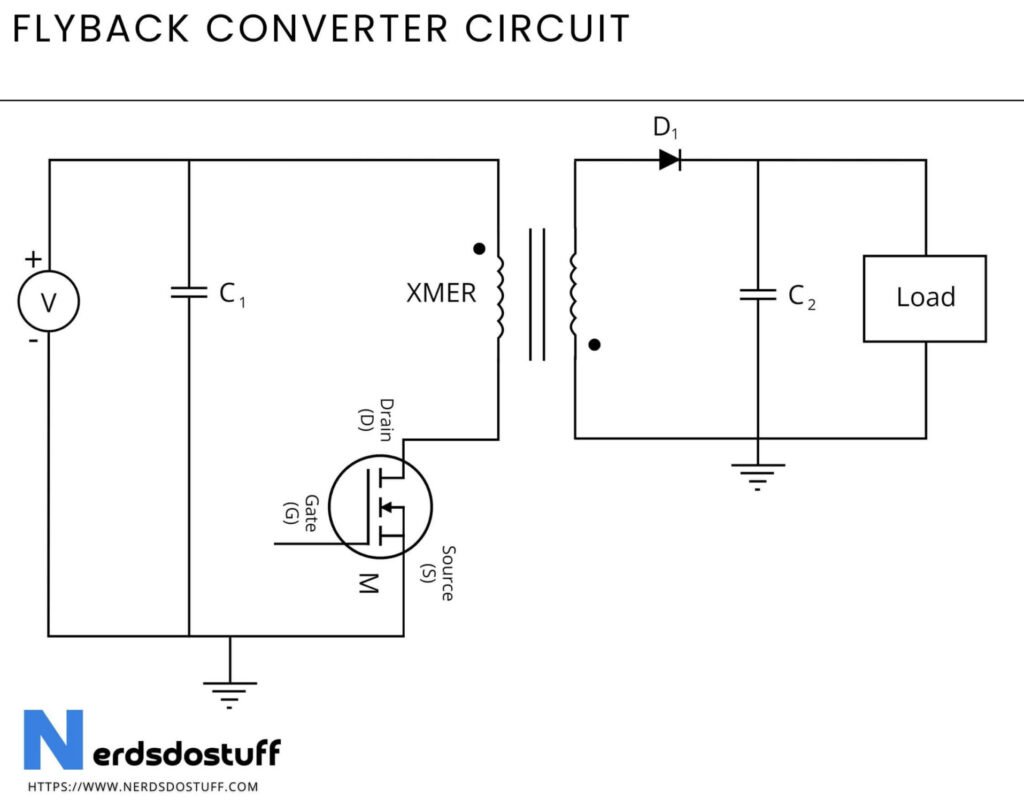What is Flyback Converter ?
A flyback converter is a type of DC-DC converter that provides galvanic isolation between the input and output circuits. It operates by storing energy in the transformer’s magnetic field during the on-time of a switching element (typically a MOSFET) and transferring this energy to the output during the off-time of the switch. The key components of a flyback converter include a transformer, a switching element, a diode, and a capacitor. When the switching element is on, current flows through the primary winding of the transformer, storing energy in the transformer’s core. When the switching element turns off, the collapsing magnetic field induces a voltage in the secondary winding, driving current flow through the load via a diode.
Flyback Converter Circuit Diagram

Working of Flyback Converter
- Switch Closed (On-state):
- The switch (usually a MOSFET) in the primary circuit is closed.
- Current flows through the primary winding of the transformer, storing energy in the transformer’s magnetic field.
- Energy Storage:
- As the switch is closed, energy accumulates in the transformer’s core.
- The primary winding builds up a magnetic field.
- Switch Opens (Off-state):
- The switch is opened (turned off), interrupting the current flow in the primary winding.
- The sudden interruption causes the magnetic field in the transformer to collapse.
- Energy Transfer:
- The collapsing magnetic field induces a voltage in the secondary winding of the transformer.
- This induced voltage drives current flow through the secondary winding.
- Diode Conduction:
- A diode connected to the secondary winding conducts, allowing current to flow to the output load.
- Energy stored in the transformer’s magnetic field is transferred to the load.
- Voltage Regulation:
- The duty cycle of the switch determines the amount of energy transferred to the output.
- By adjusting the switch’s on-time and off-time, the output voltage can be regulated.
- Galvanic Isolation:
- The transformer provides galvanic isolation between the input and output circuits.
- This isolation prevents direct electrical connection between the input and output, ensuring safety and preventing ground loops.
- Output Filtering:
- A capacitor connected across the output load smooths out voltage ripple and stabilizes the output voltage.
Applications of Flyback Converter
- Power supplies for electronic devices
- LED drivers
- Battery chargers
- Isolated power supplies for low-power electronics
- Home appliances
- Medical equipment
- Automotive electronics
- Renewable energy systems
- Industrial automation
- Telecommunications equipment




